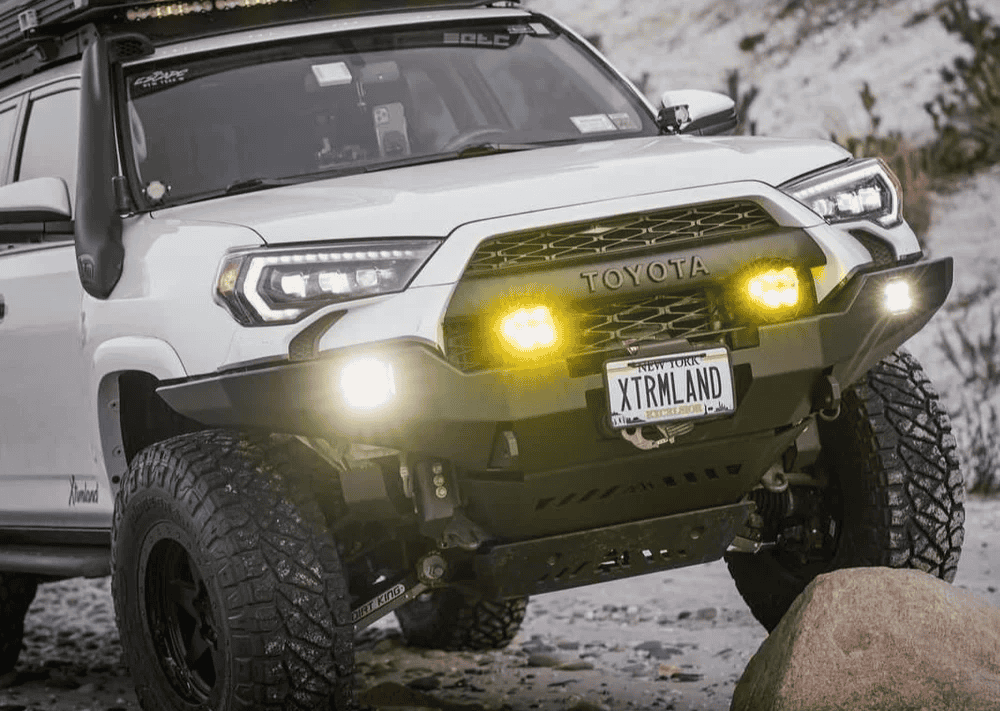Overland Vehicles

A capable forest setup is more than a few bolt ons. Start with a balanced approach that respects narrow corridors, soft soils, slick roots, off camber ruts, and blind crests under a dense canopy. Traction comes first, so choose an all terrain tire with strong sidewalls and a tread that clears mud without howling on the road. Air management matters in the woods. Air down to widen the contact patch, carry a compressor to air back up, and keep a tire repair kit within reach.
Suspension design shapes how the rig moves through chop and over ledges. Moderate lift height paired with proper spring rates and matched shocks improves clearance without raising the center of gravity too far. Protect the belly and corners. Skid plates under the engine, transmission, transfer case, and fuel tank save expensive components. Rock sliders guard sills from stumps and embedded stone. High clearance bumpers trim the overhangs and support recovery points.
Lighting and visibility keep you in control during late exits. Aimed fogs and cowl lights reduce glare in mist and dust. A hood mounted light can create reflection in moisture, so aim low and to the sides for better depth perception. Add a clean wiring scheme with fused circuits and labeled switches to service the system when it counts.
Look for a tire compound that stays pliable in cool shade and grips on wet bark and granite. Siping helps on slick rock and roots. Consider a slightly narrower width for better bite in ruts and less body brushing on tight trees. Carry a full size spare and know your torque specs for a fast change on uneven ground.
Travel and damping trump raw height. Balanced front and rear rates keep the body settled, so the rig does not pogo on washboards or wallow in off camber bowls. Bump stop tuning prevents harsh bottoming when a hidden dip sneaks up after a crest. Aim for approach, breakover, and departure angles that match your terrain rather than chasing maximum numbers.
Forest trails punish the underside and corners. Steel or aluminum armor should be braced at factory points to spread loads. Rated recovery points front and rear are non negotiable. A winch with synthetic line, a tree saver, and soft shackles form a light, safe kit. Add traction boards for quick self recovery in loam or slick clay.
Forests are dynamic. After rain, silt turns to pudding and roots polish to glass. In the dry, dust hides embedded rocks. Tune tire pressure to soften impacts and increase bite. Crawl when the soil is soft to avoid spinning that digs holes. Use momentum only when you can see the exit. Water crossings in low light call for careful wading checks and verified breather routing on axles and gearbox.
Tight corridors favor compact storage and exterior profiles that do not snag. Roof loads raise the center of gravity, so pack heavy items low and between the axles. Short wheelbases weave through switchbacks but can pitch on steep transitions. Long wheelbases bridge gaps but risk high centering. Plan lines to preserve topsoil, ride the crown in ruts when safe, and follow Tread Lightly principles to protect the trail.
A compact dual battery or power station supports a compressor, lights, and comms. Hard mount a GMRS radio for group travel and carry a handheld as backup. Digital topo maps with downloaded layers help when the canopy blocks signal. Paper maps still matter in remote timber where electronics can fail.
Reliability starts at home. Inspect fluids, belts, hoses, and driveline joints before every run. Torque check suspension and armor fasteners after the first few shakedowns, then at regular intervals. Bring a tool roll that matches your hardware, spare fuses, fluids, and a serpentine belt. A sealed first aid kit, fire extinguisher, and emergency blanket live within arm’s reach.
Recovery is a process. Assess the scene, stabilize the rig with wheel chocks, then choose the lightest viable technique. Boards or a short pull often beat a long winch. Keep bystanders clear of lines and store gear dry to prevent rot. If you travel alone, choose conservative lines and leave a trip plan with a friend.
Planning is where great builds begin. Translating that plan into a reliable system calls for smart component choices, skilled fabrication, and clean integration. If you are considering a purpose built trail platform, explore the options inside our Overland rigs lineup to see how complete systems come together. For tailored work that matches your terrain and travel style, our Custom overland upfit approach refines suspension, armor, power, and storage into a cohesive whole. Wondering what it is like to work with us from first call to handoff and shakedown at our Fayetteville shop? Start here: Why choose OZK Customs.
Bring your trail notes, favorite routes, and a wish list. We listen first, then design around how you actually drive and camp. When the work is complete, we walk you through every system so your first exit from the woods feels as easy as the last. Fill out the form and we will map your forest trail 4x4 build from concept to confident miles.
Ready to turn your trail plan into a proven 4x4 build? Share your goals and terrain, and our team will spec, fabricate, and integrate a reliable package that fits how you travel. Submit the form and get a clear path from concept to keys with OZK Customs.
ADDRESS:
6159 E Huntsville Rd, Fayetteville, AR 72701
PHONE:
(479) 326-9200
EMAIL:
info@ozkvans.com